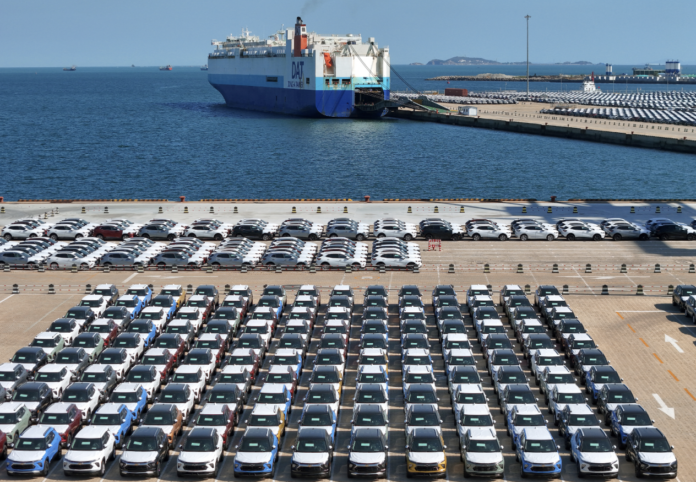BEIJING, Jan 12 – China’s automobile industry has set a new record, with both production and sales exceeding 30 million units for the first time, according to data released by the China Association of Automobile Manufacturers (CAAM) on Thursday.
With exports making up 4.91 million units, up 58 percent from the previous year, China is poised to become the world’s top automobile exporter.
In 2022, China became the world’s second-largest automobile exporter. The industry continues to show robust growth in 2023, seeing a year-on-year growth of 11.6 percent in production and 12 percent in sales. With a broadening global reach, Chinese automobiles are now exported to over 200 countries and regions.
“China’s automobile exports grew from one to one million units over 55 years. By 2021, exports exceeded 2 million units, and by 2023, they approached nearly 5 million units,” said Fu Bingfeng, executive vice president and secretary general of the CAAM.
“These milestones signify China’s automobile industry’s shift towards electrification and intelligence, which accelerated the transformation of the global automobile industry,” he said.
China’s automobile manufacturing industry has developed for 70 years. It began in 1953 with the establishment of China’s first automotive manufacturing plant and predecessor of FAW Group in Changchun city in northeast China’s Jilin Province, marking the inception of its auto industry.
Three years later, the first domestically produced Jiefang truck came off the assembly line, ending a period when China was unable to produce its own vehicles. Then a milestone was reached in 2009 when China’s automobile production and sales first exceeded 10 million units, positioning the country as the world’s leading automobile producer and market.
Lin Jie, a duty manager at Shanghai Haitong International Automotive Terminal in Waigaoqiao, Shanghai, has witnessed China’s surging automobile export growth firsthand over his nearly ten-year tenure.
On a typical day on duty, he is tasked with the orderly loading of over 4,000 domestically produced cars onto two massive cargo ships bound for international waters.
“The ship on the left is primarily heading to the South American route, carrying about 2,300 units, while the ship on the right is likely bound for the Persian Gulf route with an export volume of 2,000 units,” said Lin.
“In the past, Europe was almost like a barren land for our exports. However, in recent years, as China’s manufacturing strength has grown, Europe has been importing more of domestically produced new energy vehicles.”
As China’s largest automobile export terminal, the terminal is bustling with activity. In 2023, an average of nearly 3,000 vehicles were dispatched daily from China to destinations worldwide, making full capacity operations the norm, according to Lin. Over the years, the terminal has experienced a transformation. Initially focused mainly on importing cars, there is now a notable change in the balance between imported and exported vehicles.
“Vehicle exports, particularly those of new energy vehicles, have seen considerable growth,” said Cheng Yunbo, an operation director. “Last year, new energy vehicles made up over 30 percent of our exports.”
Over the past two years, the terminal has expanded with multiple new intelligent warehouses. Each can hold up to 6,000 commercial vehicles, matching China’s growing automobile exports.
















